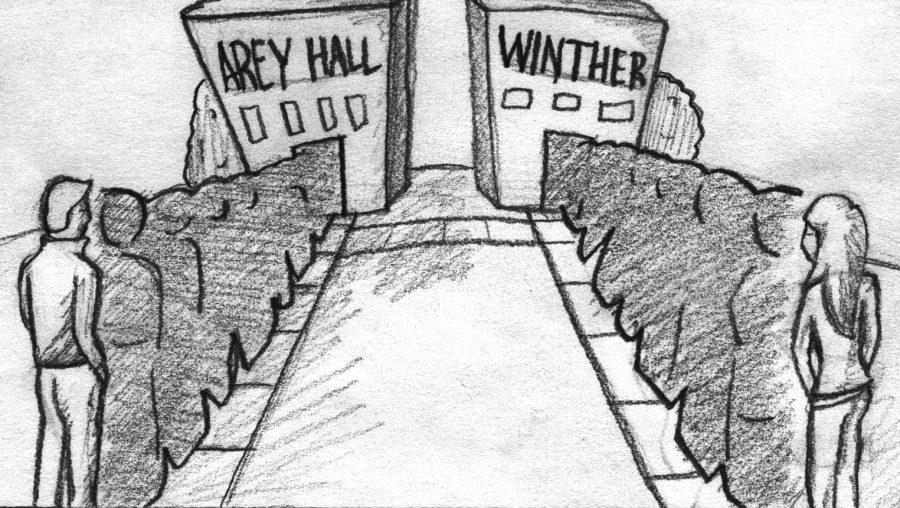At UW-Whitewater, we are lucky to be able to get to know our professors and fellow students. We don’t have to sit in crowded lecture halls with hundreds of other students while a teacher’s assistant clicks through a PowerPoint presentation.
However, because of the Growth Agenda, students may be facing a future of jam-packed classrooms.
The Growth Agenda, which has been around since 2007, aims, in part, to increase enrollment and graduation rates within the UW System.
While the Growth Agenda is meant to benefit Wisconsin and its residents as a whole, it has negative impacts for students at smaller universities.
According to the UW System’s Growth Agenda Accountability Report, 2011-12, the plan aims to prepare high school students for college, increase enrollment, retention and graduation rates at UW System schools and increase the number of well-paying jobs in Wisconsin.
While all of these goals seem positive, the Agenda has had a mix of positive and negative results and, at a smaller university like ours, its goals aren’t realistic in all aspects.
According to the Growth Agenda Accountability Report, only one of the Agenda’s goals has had entirely positive results.
The only area that showed positive results was the goal to increase the number of degrees given to students each year. According to the results of the report, during the 2010-11 school year, UW schools conferred 34,608 degrees, which was an increase from 33,442 during the 2009-10 school year.
All other aspects of teh Agenda taht were concluded at the time the report was issued had either mixed or negative results.
Access for Wisconsin high school graduates, access for transfer students and overall enrollment showed mixed results. Retention rate and the number of students who graduated within six years fell short of the goals.
The report lists the goal of closing the achievement gap for minority students as “in progress” instead of giving it a positive, negative or mixed ranking.
At UW-Whitewater, enrollment is at an all-time high. The number of prospective freshmen who applied for the upcoming school year was so great that administrators are closing admissions a month earlier than planned.
This is great news for our university, but it may cause problems for students.
We already have so many students on our campus that we have literally run out of room for them.
The dorms are packed from year to year, and the university has had to rent off-campus apartments to accommodate extra students. The various rental companies in town typically begin leasing for the next school year in September, and rentals fill up quickly.
Similarly, our campus has a limited number of academic buildings and classrooms. It is already hard for students to get seats in many general education and introductory level courses.
Increasing the number of students at our school will only make this problem worse. More professors would have to be hired to teach extra sections of classes, and even more changes would have to be made to find room for all of them to teach.
Increased class sizes can also inhibit learning. In large classes, students might not get the opportunity to speak to their professors one-on-one if they need to. If many students have questions at the same time, the professor may not be able to answer them all and still finish the day’s course material.
Students may also feel like they don’t have to attend class or pay attention because it is unlikely the instructor will notice.
While the Growth Agenda looks good on paper, in practice it has many negative effects for current students of our university.
It may cause even more problems for students unless our campus resources can grow and change along with the Growth Agenda to accommodate the increasing enrollment.


